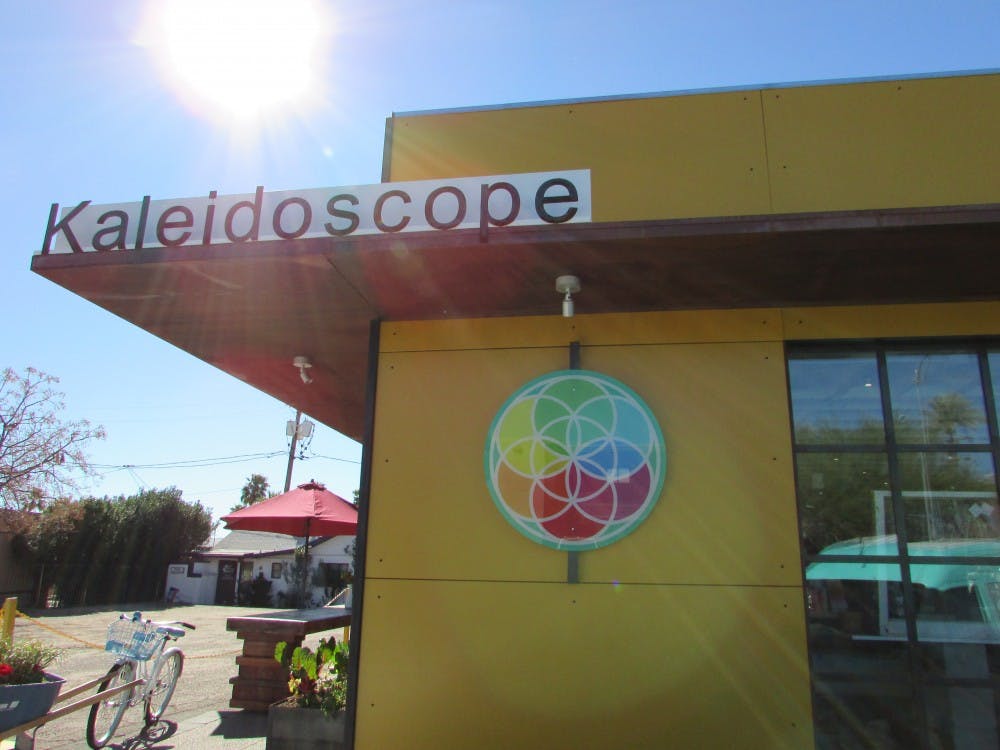Sometimes when you enter an art exhibit, the studio can seem like an open plain with scattered works of art. You float from piece to piece, grasping for a connection to the artwork, to become acquainted with its maker and meaning.
“Close Proximity,” which opened Oct. 10, accomplishes just that.
The group exhibition features the capstone work of six seniors graduating with a Bachelor’s of Fine Arts from ASU’s Herberger Institute for Design and the Arts. It's carefully displayed in Gallery 100 of Arizona State University’s Step Gallery, located on the southeast corner of Mill Avenue and University Drive, near Sacks.
There you will find the talent of three painting majors, two students in the fibers program and one earning a degree in ceramics. Each work varies immensely in material and message, but every last inch of fabric, drop of paint and shard of clay demonstrates the bond between the artist and his or her masterpiece.
Madelynn Bales, a painting major, features a collection of nude paintings. But Bales didn't take the typical approach to painting the nude female form. Her canvases include only the depictions of close friends – women she knows.
Recognizing that most nude paintings involve an unknown woman against a vapid backdrop, Bales went for a different effect.
“I really wanted to individualize them and give them a personality,” she says.
The colorful oil paintings show Bales’ friends in their rooms, their bathrooms, or wherever they were most comfortable. She knows these beautiful women and wants you, the viewer, to feel closer to them, too.
Following the pattern of human connection, Adia Olguin, a fibers major, uses fibers to express her racial identity. Olguin has an African American father and white mother, and she likes to explore her place within her own family and society. One work is a series of screen prints on linen, which hold pictures of her mother, father and herself.
“Each one represents a year of my life and the relationship I had with my parents that year,” Olguin shares.
You look at the linen and see a powerful story, not just ink and linen.
Tuan Kieu, a painting major, uses mostly acrylic on canvas to share the beauty of his home country, Vietnam.
He came to America on a boat as a Vietnamese refugee in 1994; he was part of the historic group of “boat people” who immigrated to the U.S.
“I stayed in refugee camps for about 14 months, then the U.S. came and interviewed me and took me to Arizona,” Kieu says.
After getting laid off from his occupation at Honeywell, he decided to go back to school for what he loved to do as a hobby - painting. Now, almost every painting he creates includes water and some other form of nature, reminiscent of Vietnam.
One canvas shows the gaping holes left by B-52 Bombers in the Vietnam War. In the rainy season, these holes that would normally symbolize unrest and brutality, turn into something tranquil and lovely - and Kieu captures that in his painting. You are brought closer to his childhood, as he used to play in these water-filled bomb holes.
Lisa Bryson, another painter major, also enraptures her viewer with portraits that represent her upbringing.
“Growing up I didn’t have a lot of family or heritage, so there was this lack of place, so almost always my work is absent of background,” Bryson says.
Bryson works in shades of gray and charcoal, leaving one significant item to take the stage in color.
“My Son’s Faith,” a large vertical painting of one of her sons, is formed in various tones of gray, the background void of a scene or pattern, but the rosary around his neck is ruby red, with the cross pressed in gold leaf.
Bryson also uses her boyfriend, Eddie Hennig, as a muse for her most recent work. His gray-painted eyes will pierce your own when you look at his portrait, mounted close to the one of her son.
Breanna Whittemore, a ceramics major, loves seeing art form with the material in her hands. After focusing on intermedia with a digital emphasis but not enjoying it, she finally realized what kind of art she loves to do.
“I found that making things with my hands was more interesting, so I just decided to try it, and luckily I enjoyed my first ceramics class and have come to enjoy ceramics more,” Whittemore says.
Just as she chose ceramics on a whim, Whittemore doesn’t try too hard to plan her ceramic pieces. She lets the clay hit the wheel and welcomes what forms may come, instead of making the clay go a certain way.
On the other hand, Rachel Hearn, a fibers major, has a purpose in every step of the process. She hand-spins and dyes her own wool, and no thread of fabric on her intricate pieces appears by accident.
“I’m very much so attached to the material,” Hearn says.
She will spend hours at the loom. But instead of calculating those hours, she looks at the time as deepening her connection with her artwork.
“I always loved to make things,” Hearn says. "That was always the case.”
"Close Proximity" runs until Friday, Oct. 21, in Gallery 100 of ASU's Step Gallery.
Contact the reporter at mfidura@asu.edu






